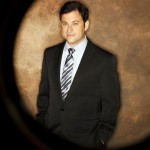I’m too scared to watch The Walking Dead. Same with American Horror Story. So University of Western Ontario student and horror film fan Kira Charron–who previously filed her impressions of Terra Nova for TVFMF—adds this review on all things spooky this TV season.
By KIRA CHARRON
Horror film directors have a reason to be scared. So far this year, horror movies have been disappointing at the box office, with many capping at single digits in their opening weekends and failing to deliver the screams audiences seek.
Yet over on the small screen, more gore, ghouls and ghosts are popping up than ever.
Take The Walking Dead for example, currently AMC’s highest rated show. Or FX’s American Horror Story, whose pilot was possibly the scariest hour on TV since “Hush,” the Buffy episode that still gives me chills. Even broadcast networks are hopping on the bandwagon: this season, NBC’s Grimm and ABC’s Once Upon a Time offer decidedly dark twists on familiar fairy tales.
For a genre that hasn’t had a mainstream hit on TV in years, there seems to be a sudden surge in interest. But why is horror migrating from movie theatres into our living rooms?
One belief is that audiences are fed up with uninspired remakes and rehashed sequels. James Bialkowski runs Vagrancy Films, a company in
advertisement
“It’s an unfortunate lack of originality that
Many of the horror films that have come out this year are remakes (Fright Night, The Thing), sequels (Final Destination 5, Scream 4), or adaptations (Priest, Don’t be Afraid of the Dark). One exception is Paranormal Activity 3, which grossed a record breaking $54 million in its opening weekend. Bialkowski attributes this to the relatively new franchise and creative marketing. “Will it last three weeks at those numbers?” he asks. “Probably not.”
On the other hand, today’s TV series are combining original ideas with top-notch writing and special effects. Even though The Walking Dead is based on a graphic novel of the same name, plot twists, interesting characters and disturbingly realistic gore bring audiences back week after week.
Similarly, American Horror Story is based on the well-known ‘family moves into a haunted house’ plotline. But after only a few episodes, it becomes clear that the series is less about the house and more about the troubled family members themselves. In between the gruesome murders and ghostly apparitions is a modern and relevant family drama.
And let’s not forget the brand of campy comedy that often goes hand-in-hand with over-the-top terror. How else could you explain Jessica Langes’ ‘Southern Belle’ character on AHS?
Selma Purac, a professor at The University of Western Ontario, teaches a course on vampires in contemporary media. She believes that this genre blurring makes shows classified as ‘horror’ appealing to wider audiences. “More interesting stories are unfolding on our television screens…[the shows] mix some of the qualities of traditional horror narratives with drama, romance, and fantasy.”
Even series like True Blood and Dexter, which premiered in 2008 and 2006, respectively, explore darker subject matter without being defined as horror per-say. They may have even set the stage for the more extreme scares we’re seeing today.
Purac also points out that we like horror films in the first place because “even though we might be afraid, there is a sense that we have some measure of control over our fears – that we can master our fears by exposing ourselves to them in a safe, cinematic environment.” Horror forces us to ask what it is we are truly afraid of, and the films or TV shows being produced often reflect common anxieties of the time.
Until
Whether this is the genre’s way of reinventing itself or just another trend remains to be seen. “Horror in general goes in peaks and valleys,” says Bialkowski. But right now on TV, “horror is hot.”







